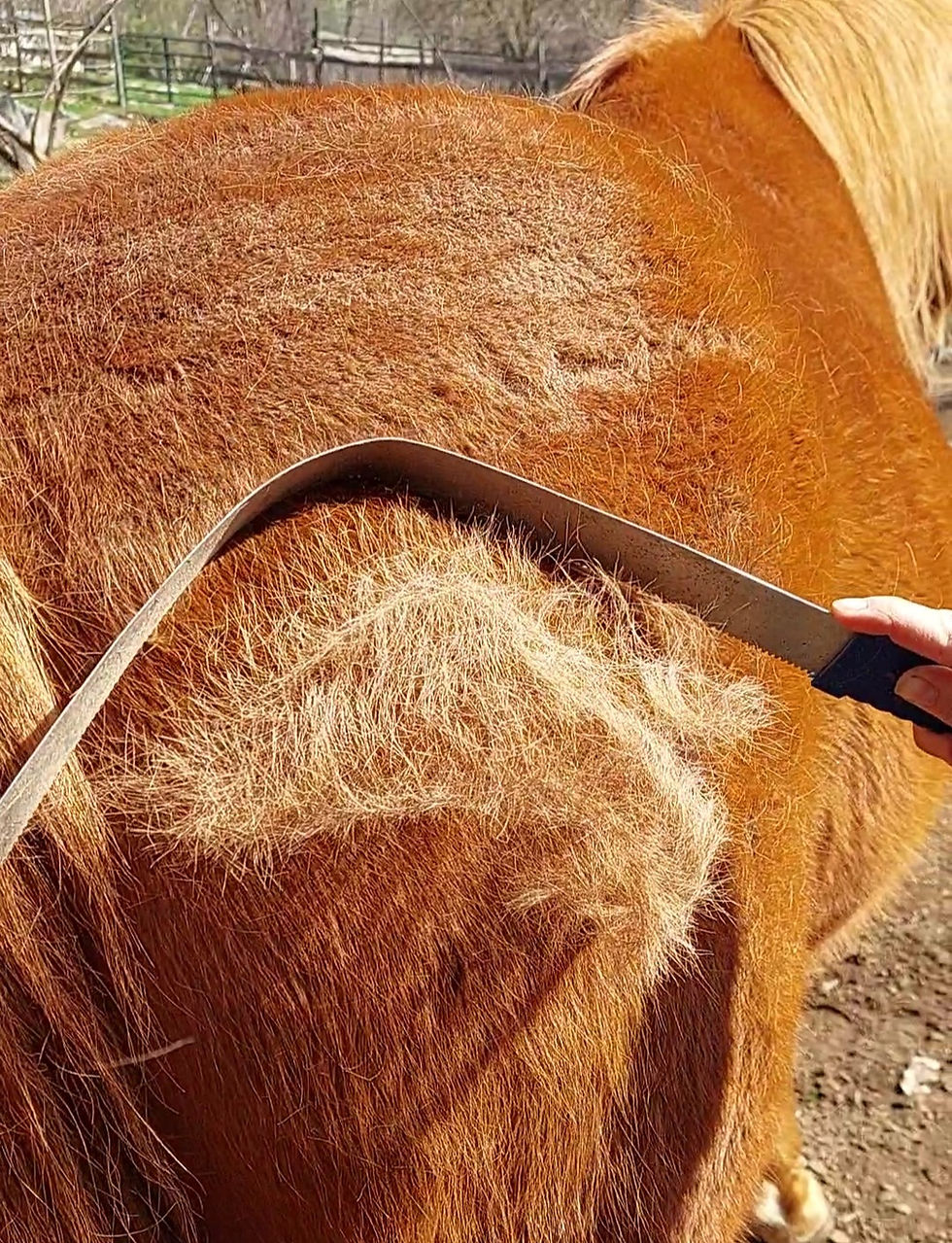With spring comes a much-appreciated thaw, warmer weather, and a break from the snow. However, spring can also be a nightmare for horse owners. Rain, mud, and shedding hair make this one of the messiest seasons on a farm. Unfortunately, before the fun that comes with cummer can be enjoyed, horse caretakers have to survive the shed. If you are interested in learning more about why your horse sheds in spring and how you aid the process, keep reading.
What is a winter coat?

Long before horses became domesticated, they were able to survive extreme weather on their own. Early Equis didn't have air-tight barns or plushy stable sheets to keep them warm throughout the winter. Luckily, they adapted to the seasons and grew a thick winter coat that kept them warm and dry. Even in the modern day with barns, blanketing, and clipping, horses still grow long winter coats in the winter. Once spring beings to come around, the horse will need to get rid of their long coats.
When does shedding start?
Contrary to what many believe, the beginning of the shedding season is not triggered by warmer temperatures. The increased daylight sparks shedding to begin. Once there is around 16 hours of daylight each day the horse's coat will begin shedding. Contrary to popular belief, blanketing horses will not make them grow a thinner coat or help them shed earlier as temperatures do not affect coat growth. It will typically last for 60 days, although individual horses will vary.
What does it mean for your horse's health?

While for many horse owners, shedding season means hours of grooming, messy clothes, and long clean-up, it can also give insight into a horse's health. Even though horses will generally follow the same pattern when shedding, there will be individual differences. Some horses will shed out really fast while others will take months to lose their winter coat. It's important to keep an eye on your horse's shedding throughout the season and take note if there are changes that can be indicative of underlying health problems. Taking an especially long time to shed out can be a symptom that should be looked into.
Worms
If your horse is taking longer to shed out than normal, you may want to check if they are on schedule for deworming. A horse with a large worm burden can be late to shed out their winter coat. If you believe your horse has worms, reach out to a local vet for advice.
Cushing's Disease
Cushing's Disease is a hormonal disorder that often appears in older horses. The disease can have a drastic change on the horse's winter coat. Cushing's often leads the winter coat to grow extra long and shaggy. The coat will often hang on long into the spring and take an extended period of time to shed out completely. Horses with Cushing's can get long "cat hairs" under their chin and belly that shed last. If your horse is older than 7 and is exhibiting those signs, a vet should be contacted for a diagnosis immediately before the disease can progress.
Helping horses shed
Shedding season can lead to unsightly and itchy horses. Luckily, there are things you can do to help your horse shed faster and expose the healthy summer coat below.
Make sure they get enough time outside

Letting your horse spend most of their day outside can do wonders when shedding season comes around. If your horse spends a lot of time inside a dark barn, they may not be getting enough sunlight to trigger the shedding process. Horses need at least 16 hours of sunlight to start shedding. While letting your horse spend most of their time outside is ideal, if that is not possible, giving them a full spectrum light bulb in their stall can help.
Horses that are kept outside spend much of their time interacting with their environment. They will stretch on fence posts and trees and roll around in the sand and mud. This will help loosen their coat naturally and expedite the shedding process.
Feeding oil
A healthy diet will go a long way to helping your horse have a natural shed. Canola oil and soybean oil are both high in omega 3 and omega 6 fatty acids, making them a good choice. If you are looking to speed up the process, some anecdotal evidence shows that adding oil to a horse's grain can help them shed faster and give them a healthy glow.
Grooming
The best way you can help your horse shed out in the spring is with vigorous grooming. in addition to helping your horse shed faster, grooming can keep your horse's coat and skin healthy.

A curry comb and stiff-bristled brush will go a long way to loosening and removing a horse's winter coat. However, there are numerous shedding products on the market that can help make the process easier. Shedding blades and blocks are popular options that should be in everyone's grooming kit.
Once the weather is warm enough, giving your horse a bath with soap and water can help loosen the last of the hair and remove it along with the winter's dirt and grim.
Even though spring shedding season means many long days spent grooming your horse and sweeping hair out of the barn aisle, it means warmer days are on their way and with them, all the great things we get to do with our horses come summer.
_edited.png)

Comments